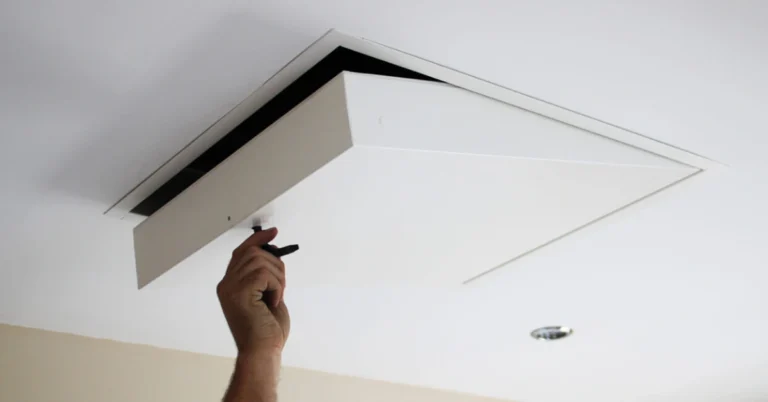Not every part of a house is easy to get into, and the loft is one of those spots. It’s often used for storage, and sometimes it holds things like water tanks, wiring, or insulation. But getting up there shouldn’t mean letting cold air in or making a mess of your ceiling. That’s where a good loft hatch makes a huge difference.
A modern loft hatch isn’t just a basic opening with a wooden door. It’s designed to seal properly, fit right, and help your home stay warm and tidy. Most people don’t think about it much, but it plays a big role in how the whole house performs, especially when it comes to heat.
Why Loft Hatches Matter More Than They Used To
Older loft hatches were usually just thin wooden panels that didn’t seal well. They often let warm air escape through the ceiling, which meant heating systems had to work harder to keep the house comfortable. That’s not great for energy bills—or for the planet.
These days, insulation rules are stricter, and people are way more aware of energy use. Even something small, like a poorly fitted hatch, can mess up a home’s overall efficiency. That’s why newer hatches are built to reduce air leaks and help maintain a steady temperature inside.
If access to the loft is needed regularly, or even just once in a while, there are smarter options out there. It’s possible to explore modern loft hatches that are designed with things like airtight seals and insulation built in, so heat stays where it belongs—inside the home.
What Makes a Loft Hatch “Modern”?
A solid loft hatch isn’t just about the door. It’s about how well it fits, how it opens, and what materials are used. Newer models usually come with built-in draught seals that stop warm air from escaping and cold air from getting in.
Some are designed with insulated panels, so they’re basically like an extension of your ceiling’s insulation. Others have drop-down ladders or push-up doors with locking frames, depending on how often someone needs to use the loft space. The goal is to make access easy while still keeping the whole area sealed when it’s closed.
It also helps to choose a hatch that blends in well with the ceiling. That way, it doesn’t look bulky or out of place, and it won’t affect the feel of the room below it.
The Real Impact on Heating and Bills
Even if a house has loads of insulation in the loft itself, a badly sealed hatch can cancel out a lot of that benefit. Warm air rises, so if there’s a gap at the top of the house, it’ll head straight out. That makes the heating system work longer to keep things warm, which uses more energy and drives up the cost.
By replacing an old hatch or installing a better one during a build or renovation, it’s possible to cut back on those heat losses without changing the rest of the house. It’s a simple fix, but it helps the whole insulation setup work the way it should.
In colder months, this matters even more. Any weak spot in the ceiling becomes a place where cold air can sneak in. A modern, well-fitted loft hatch helps shut that down.
What to Look for When Choosing One
Not every loft hatch is the same. Some are basic models meant for occasional access. Others are designed for regular use and built with stronger materials. Choosing the right one depends on how the loft is being used.
If the loft is only for light storage or needs checking once or twice a year, a sealed push-up hatch might be enough. If it’s used more often, something with a built-in ladder and a stronger frame could be better. Either way, the main things to check for are:
- Airtight seals
- Thermal insulation
- Easy operation
- A solid frame that fits tightly
Hatches made from steel or insulated plastic tend to last longer and seal better than thin wood panels. Some even meet building regulations for airtightness and insulation, which makes things easier during inspections.
Small Detail, Big Payoff
It’s easy to focus on the big parts of a home—walls, windows, roofs—but smaller details like the loft hatch have a major role too. A poorly sealed opening can undo a lot of the work done to keep a space warm, clean, and energy-efficient.
Adding or upgrading a hatch isn’t a huge project, but it does make a difference. Whether it’s during a renovation or part of new construction, getting that part right means fewer cold drafts, lower bills, and less stress down the line.
A Smarter Way to Build or Upgrade
In any space that needs access to hidden areas—like the loft, attic, or even ducting—good hatches help keep things smooth. They let people get to important parts of the building when needed, without making the rest of the space harder to heat or use.
As more homes aim to be energy-efficient, the focus is shifting to smart, sealed access points. And with better options available now, there’s no reason to settle for something that doesn’t work well or wastes heat.
Worth Thinking About
If a home feels colder than it should, or if heating bills seem too high, it might not just be the insulation that’s the issue. The access points—especially the loft hatch—can play a bigger part than most people think.
Swapping out an old hatch for one that seals tightly and keeps warmth in is one of the easier upgrades out there. It doesn’t take long, doesn’t cost a ton, and it makes the whole home feel more solid.
A small fix, big impact. That’s what smart building is about.

